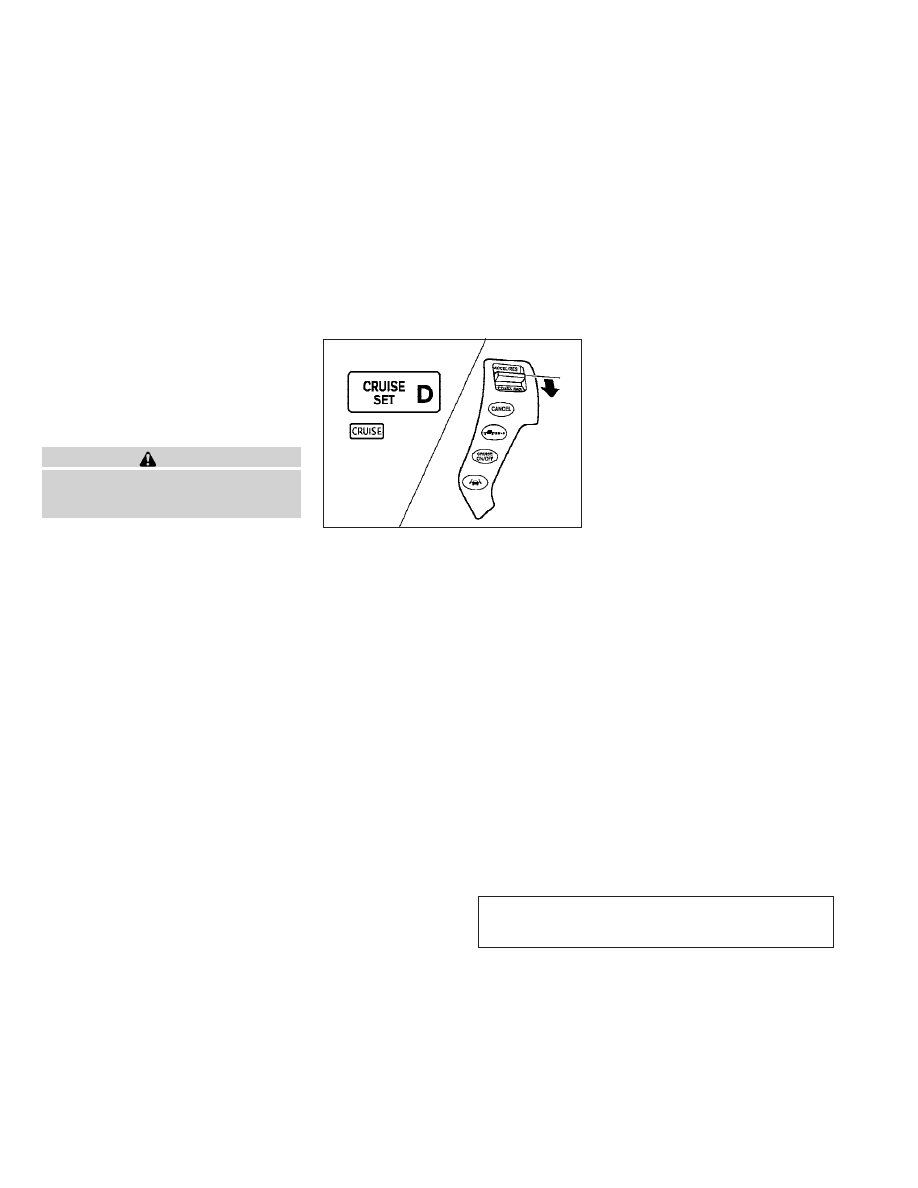Infiniti M45 (2010 year). Instruction - part 21

When the ignition switch is pushed to the LOCK
position, the system is also automatically
turned off. To use the Intelligent Cruise Control
again, quickly push and release the MAIN
switch (vehicle-to-vehicle distance control
mode) or push and hold it (conventional cruise
control mode) again to turn it on.
CAUTION
To avoid accidentally engaging cruise control,
make sure to turn the MAIN switch off when not
using the Intelligent Cruise Control system.
To set cruising speed, accelerate your vehicle to
the desired speed, push the SET/COAST switch
and release it. (The CRUISE SET indicator will
come on in the display.) Take your foot off the
accelerator pedal. Your vehicle will maintain the
set speed.
● To pass another vehicle, depress the accel-
erator pedal. When you release the pedal,
the vehicle will return to the previously set
speed.
● The vehicle may not maintain the set speed
when going up or down steep hills. If this
happens, instructionly maintain vehicle speed.
To cancel the preset speed, use one of the
following methods:
a) Push the CANCEL button. The CRUISE SET
indicator will turn off.
b) Tap the brake pedal. The CRUISE SET
indicator will turn off.
c) Turn the MAIN switch off. Both the CRUISE
indicator light and CRUISE SET indicator
will turn off.
To reset at a faster cruising speed, use one of
the following three methods:
a) Depress the accelerator pedal. When the
vehicle attains the desired speed, push
and release the SET/COAST switch.
b) Push and hold the RESUME/ACCELERATE
set switch. When the vehicle attains the
desired speed, release the switch.
c) Push,
then
quickly
release
the
RESUME/ACCELERATE switch. Each time
you do this, the set speed will increase by
about 1 MPH (1.6 km/h).
To reset at a slower cruising speed, use one of
the following three methods:
a) Lightly tap the brake pedal. When the
vehicle attains the desired speed, push
the SET/COAST switch and release it.
b) Push and hold the SET/COAST switch.
Release the switch when the vehicle
slows down to the desired speed.
SSD0683
5-44
Starting and driving
w
—
—
05/15/09—pattie
X